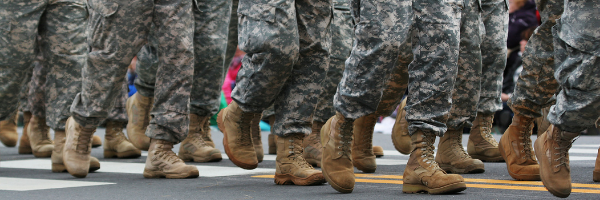Welcome to the Wednesday, Nov. 11, Brew. Here’s what’s in store for you as you start your day:
- 96 current members of Congress have served in the armed forces
- Five states have certified their Nov. 3 election results
- Eleven states, Washington D.C., have active travel restrictions due to COVID-19
96 current members of Congress have served in the armed forces
Ninety-six members—18%—of the current Congress (pre-Nov. 3 election) have served in the armed forces. Of those, 66 are Republicans, and 30 are Democrats. Fourteen of these veterans retired or sought other offices in the 2020 elections, meaning they will not return for the 117th Congress in January.
Of the others, 66 won their re-election campaigns, six were Senators not up for re-election this year, and six are in races that are not yet called. Four—Sen. Martha McSally (R-Ariz.), Steve Watkins (R-Kan.), Collin Peterson (D-Minn.), and Denver Riggleman (R-Va.)—lost their bid for re-election.
- Of the 96 veterans serving in the 116th Congress, 73 served on active duty with one of the four main branches of the service—15 in the Air Force, 36 in the Army, 15 in the Marine Corps, and eight in the Navy.
- U.S. Rep. Steven Palazzo (R-Miss.) served in both the Army and Marine Corps.
- Twelve members of Congress served in the National Guard, and 11 have served in the reserves.
According to the American Enterprise Institute, there were 100 veterans in the 115th Congress and 101 in the 114th Congress.
President Woodrow Wilson (D) recognized November 11 as Armistice Day in 1919 to commemorate the armistice agreement that ended World War I in 1918. Congress recognized Nov. 11 as a legal holiday to honor veterans of World War I in 1926. It changed the name from Armistice Day to Veteran’s Day in 1954 to further commemorate the service of veterans in World War II and the Korean War.
Five states have certified their Nov. 3 election results
Election results reported by media sources are regularly referred to as unofficial on Election Night and the days that follow. But when do unofficial election returns become official? Each state has its own process and timetable for canvassing and certifying results in every election.
In a canvass, local and state election officials verify that each ballot cast in the election was correctly counted. Certification is the process where election results are made official. The two processes are closely related, and some states, localities, and commentators use the terms interchangeably to describe the entire process of counting ballots and formalizing results.
Five states have already certified their Nov. 3 election results. Delaware was the first state to do so on Nov. 5. Louisiana, Oklahoma, South Dakota, and Vermont certified their results on Nov. 10. Two states—South Carolina and Wyoming—will certify election results today.
Forty-six states have laws establishing deadlines for certification. Four states—Hawaii, New Hampshire, Rhode Island, and Tennessee—have no specific date for certification.
The election certification date affects when a recount can occur. A recount is a process where election officials re-tabulate the votes cast in an election to verify the accuracy of the original results. Recount laws and the timing of when a recount can be triggered or requested varies by state. Some states allow for recounts to occur after canvassing but before results are made official through certification. Other states require both the canvassing and certification of results before beginning a recount process.
The chart below shows state election result certification deadlines relative to the Nov. 3 general election. A longer bar indicates a date further from the general election. Ballotpedia compiled this information from a review of state laws, election administration manuals, election calendars, and inquiries of election officials.
Eleven states, Washington D.C., have active travel restrictions due to COVID-19
Since the start of the coronavirus pandemic, 25 states have issued at least one executive order restricting interstate travel. While each state’s order is different, they generally required travelers from certain states to self-quarantine and limit exposure to others for a specified period of time upon entering the state. In some instances, travelers could be exempt from the requirement if they took or presented a negative COVID-19 test taken within a certain number of days of their arrival.
Of the 25 executive orders issued by governors or state agencies placing restrictions on out-of-state visitors, at least 14 have been rescinded. Eleven states and Washington D.C. currently have active travel restrictions.
For example, Washington, D.C., Mayor Muriel Bowser (D) announced a new advisory Nov. 4 that requires visitors to the city to take a COVID-19 test within 72 hours of arriving in the district. Visitors who are in the city for longer than three days are asked to take a test within 3-5 days of arrival. The advisory asks those who test positive or come into contact with someone who tested positive to refrain from entering the city.
Our Documenting America’s Path to Recovery newsletter tracks the status of reopening in all 50 states and summarizes major changes due to the coronavirus pandemic in politics, government, and elections. It covers the current status of school closures and reopenings, stay-at-home orders, noteworthy lawsuits, travel restrictions, mask mandates, eviction and foreclosure policies and more.
Documenting America’s Path to Recovery is published every week on Tuesdays and Thursdays—click here to subscribe and get Thursday’s edition delivered to your email!


